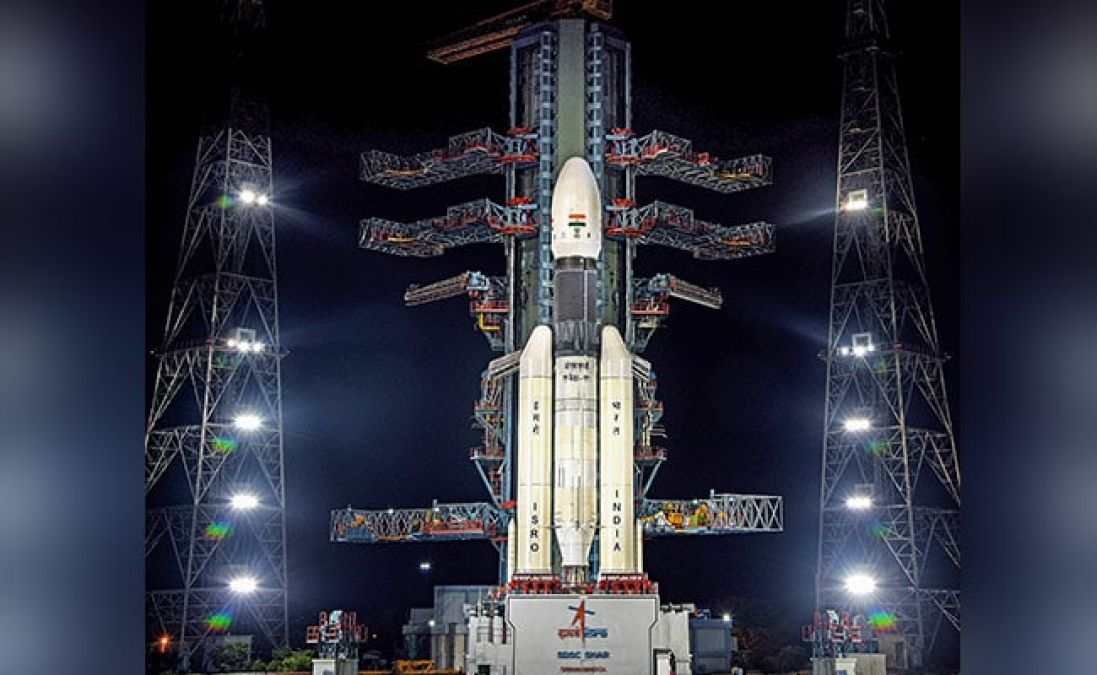
The Indian Space Research Organisation (ISRO) made a momentous announcement declaring its ambitious lunar mission, Chandrayaan-3, scheduled for launch on July 14th at 2:35 PM. The awe-inspiring event will unfold at the Satish Dhawan Space Centre, situated in the captivating city of Sriharikota, Andhra Pradesh.
"The awe-inspiring launch of Chandrayaan-3 is set for July 13th, a date intricately determined by the majestic sunrise on the lunar surface. As the landing unfolds, the gentle touch of sunlight is a prerequisite. Imagine, a day on the moon encompasses a staggering 15 Earth days, providing ample sunlight to illuminate the lunar landscape, followed by a captivating 15-day period of celestial darkness," Somanath, the esteemed spokesperson, expressed in an engaging conversation with reporters on the sidelines of the illustrious G20 meeting, which focused on unraveling the mysteries of the captivating space economy.
Chandrayaan-3 marks India's triumphant third lunar mission, enveloped in eager anticipation from all corners of the globe. Yet, as we await this historic launch, let us delve into the enchanting chronicles of Chandrayaan-2 and Chandrayaan-1, unfolding narratives that have shaped India's celestial voyage throughout the cosmos. Embarking on this awe-inspiring journey, the earlier mission took flight on the 22nd of July, 2019, soaring into the infinite abyss on the wings of the Geosynchronous Satellite Launch Vehicle Mark III, at a noteworthy cost of Rs 978 crore.
The captivating Chandrayaan-2 mission comprised three essential elements—an orbiter, a lander named Vikram, and an enchanting rover known as Pragyan. Their collective mission was twofold: a graceful landing of Vikram on the lunar terrain and the deployment of Pragyan, destined to unlock the secrets of science through captivating experiments. Furthermore, it aspired to achieve an unprecedented milestone by securing the first-ever landing within the enigmatic Lunar South Pole Region.
Tragically, destiny had its own design, as the valiant lander, christened Vikram, faced a tumultuous descent, resulting in a harsh landing on the 7th of September, 2019, shattering the dreams of the rover's exploration.
Nonetheless, the indomitable spirit of the orbiter prevailed, faithfully achieving its intended purpose, gracefully navigating the heavens and poised to play a pivotal role in the forthcoming Chandrayaan-3 endeavor. Chandrayaan-2 proudly stands as a testament to India's resolute dedication, being the first fully indigenous mission, adorned with the remarkable leadership of pioneering women scientists. Muthayya Vanitha, the esteemed project director, and Ritu Karidhal, the visionary mission director of Chandrayaan-2, defied expectations and left an indelible mark on history.
Venturing even further into the annals of India's cosmic odyssey, we encounter Chandrayaan-1, the vanguard of the nation's lunar aspirations. This remarkable mission embarked on its celestial sojourn on the 22nd of October, 2008, propelled by the mighty PSLV rocket. Laden with eleven scientific instruments, meticulously crafted in India, the United States, the United Kingdom, Germany, Sweden, and Bulgaria, Chandrayaan-1 set forth on an extraordinary mission of discovery.
Throughout its cosmic pilgrimage, the satellite gracefully completed over 3,400 orbits around the Moon, unraveling its enigmas and secrets. Alas, every grand journey must eventually meet its conclusion, and so it was with Chandrayaan-1, as ISRO lost communication with the spacecraft on the 29th of August, 2009. However, the legacy of Chandrayaan-1 endured, as it revealed a groundbreaking revelation, a discovery of water on the Moon, an astounding revelation shared with the world by NASA in September 2009.
Indeed, Chandrayaan-1 heralded the dawn of a new era, igniting a spark that would kindle India's pursuit of grander cosmic ambitions. An audacious attempt to land on the moon and showcase end-to-end capabilities in safe landing and lunar roving unfolds before us. Only three nations viz., the United States, the erstwhile Soviet Union, and China have thus far celebrated triumphant moon landings. Moreover, the Chandrayaan-3 mission seeks to showcase the remarkable roving prowess of its rover while engaging in a plethora of captivating scientific experiments. Equipped with cutting-edge scientific instruments, this momentous voyage aims to unlock the thermophysical properties of Earth's celestial neighbor. In March 2023, the Chandrayaan-3 spacecraft completed rigorous tests, affirming its readiness to navigate the challenging environment of the lunar expanse.